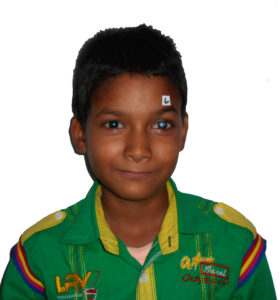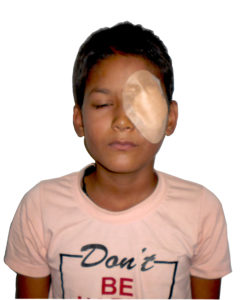Childhood cataract
Cataract is one of the leading causes of childhood blindness
What is a cataract?
Cataract is a clouding or opacification of the eye’s lens. This prevents light rays from reaching the retina and thus impairs vision.
What are the causes of childhood cataract?
While in most cases there is no specific cause, some children may have associated diseases involving other parts of the body. These may be investigated for if suspected by the doctor
How do I get to know that my child has a cataract?
While an advanced cataract may be obvious with a white reflex from the pupil of the eye, an early cataract may be difficult to identify, unless the child is evaluated by an ophthalmologist.
In cases in which the cataract affects only one eye, it may be even more difficult to suspect, since the child carries out all his activities with the normal fellow eye.
What is the treatment? If surgical, can I wait for my child to grow up before I consider getting him operated?
While certain types of cataract do not progress and need just monitoring to detect any increase in the opacification of the lens, there are others that would need immediate surgery. Any child with a significant cataract needs prompt surgery as soon as it is detected. This would ensure that the child’s vision develops to its maximum potential. Delay in surgery can cause irreversible loss of vision.
Will my child need glasses after the surgery?
Yes. Even if an intraocular lens (IOL) has been put in the eye, the child will need glasses.(See PIL on eyeglasses in children)
However, if an IOL has not been put the child would need thick glasses (aphakic) to see clearly. Contact lenses are also an option.
After surgery, will he need any further medical or surgical treatment?
Yes. Some children with a cataract in one eye may need treatment for ‘lazy eye’ (See PIL on amblyopia). All children need to be regularly monitored for glaucoma and the need for change of glasses.
Further, at a later date, some may develop a membrane in the eye after the surgery, that may need to be removed by laser or surgery.
When should you bring your child for a check-up?
Your pediatrician should examine your child’s eyes during the first year of life. If he suspects any abnormality or there is a family history of squint, childhood cataract or any other eye disorder , your child needs a thorough evaluation by a pediatric ophthalmologist at the earliest
Even in a child with apparently normal vision a comprehensive eye examination by the 4th birthday is recommended and every 2 years thereafter. Certainly by pre-school your child should have regular eye examinations to maintain proper eye health.
Some of the warning signs that should prompt a visit to the ophthalmologist are-
- One eye turns in toward the nose or wanders outwards, either constantly or occasionally; eyes that do not appear to look in the same direction
- Child tilts or turns head or chin when looking intently
- One eye closes occasionally, especially when the child is outside
- Eyes vibrate
- Child covers one eye to look at things
- Squeezes eyes nearly closed to see
- Cannot identify things across the room or farther away
- Frequent rubbing of eye
- Discharge from eyes or teary eyes, when not crying
- Droopy eyelids
- A white pupil in either or both eyes
1. What is strabismus /”squint”?
When both the eyes are not aligned together as they are expected to be, we call it a strabismus. (Commonly called ‘cross eyes’)
2. At what age does it occur?
Strabismus can occur at any age, sometimes even at birth.
3. Can strabismus be seen by the caregivers?
While some cases of strabismus are very obvious, others occur intermittently or are mild and may not be as obvious to caregivers.
4. How can one prevent strabismus?
One cannot prevent strabismus. It is essential to detect it at the earliest by a routine eye evaluation by a specialist.
5. What is the treatment of strabismus?
Strabismus is of many types. Depending on the type of strabismus treatment may be eye muscle exercises, eyeglasses and or surgery.
6. What if one does not get strabismus treated?
Delay in treatment could lead to decrease of vision and depth perception.










